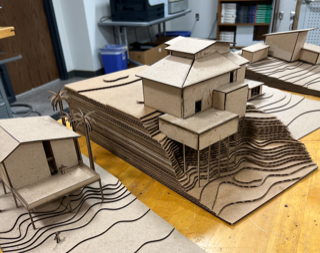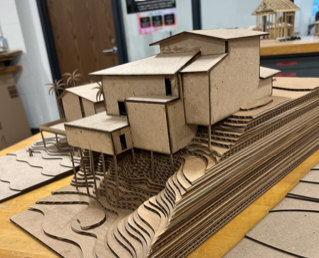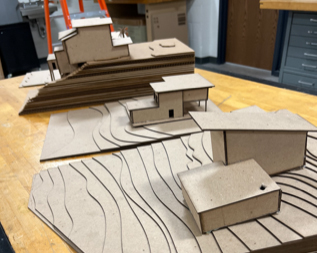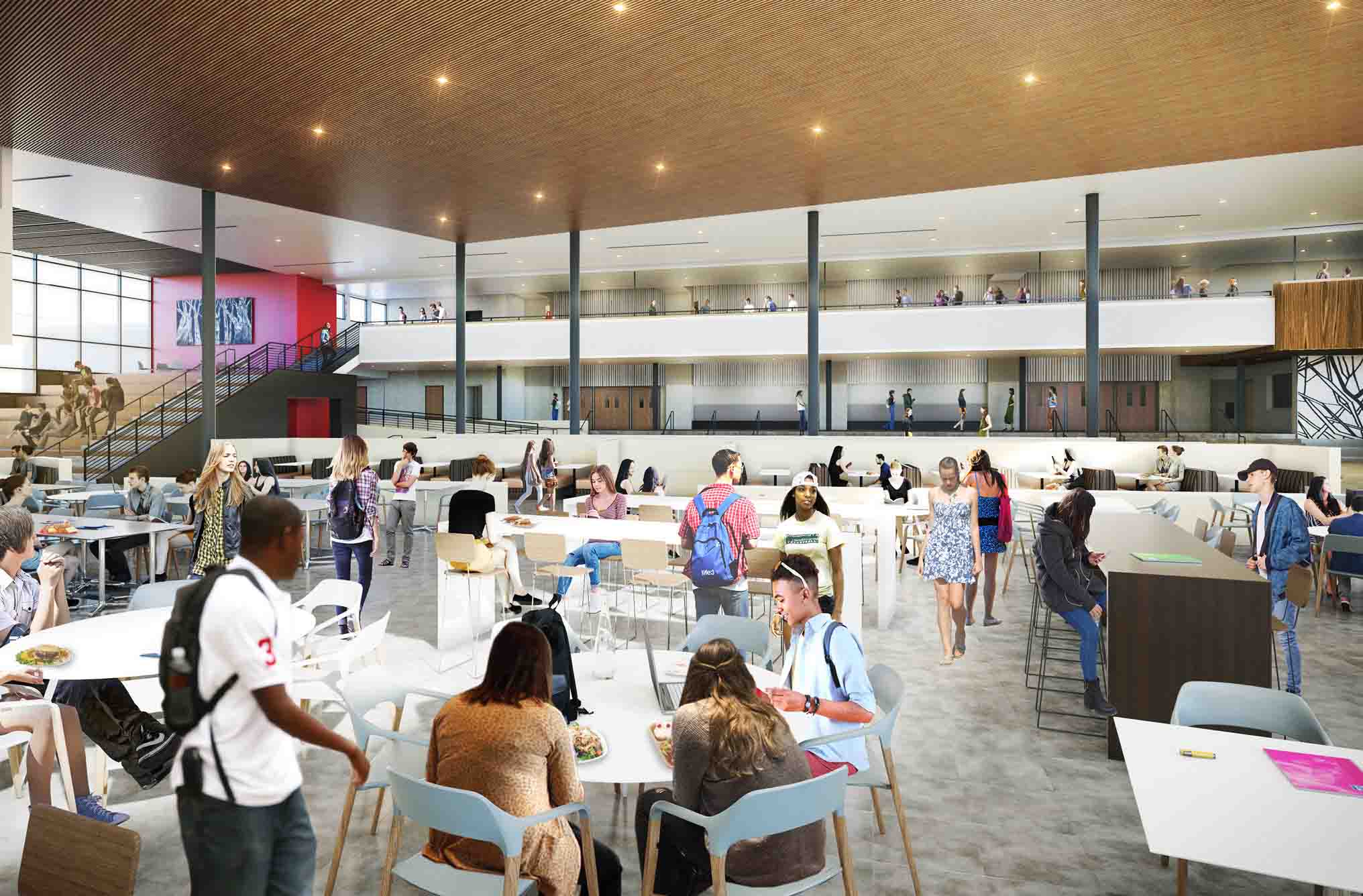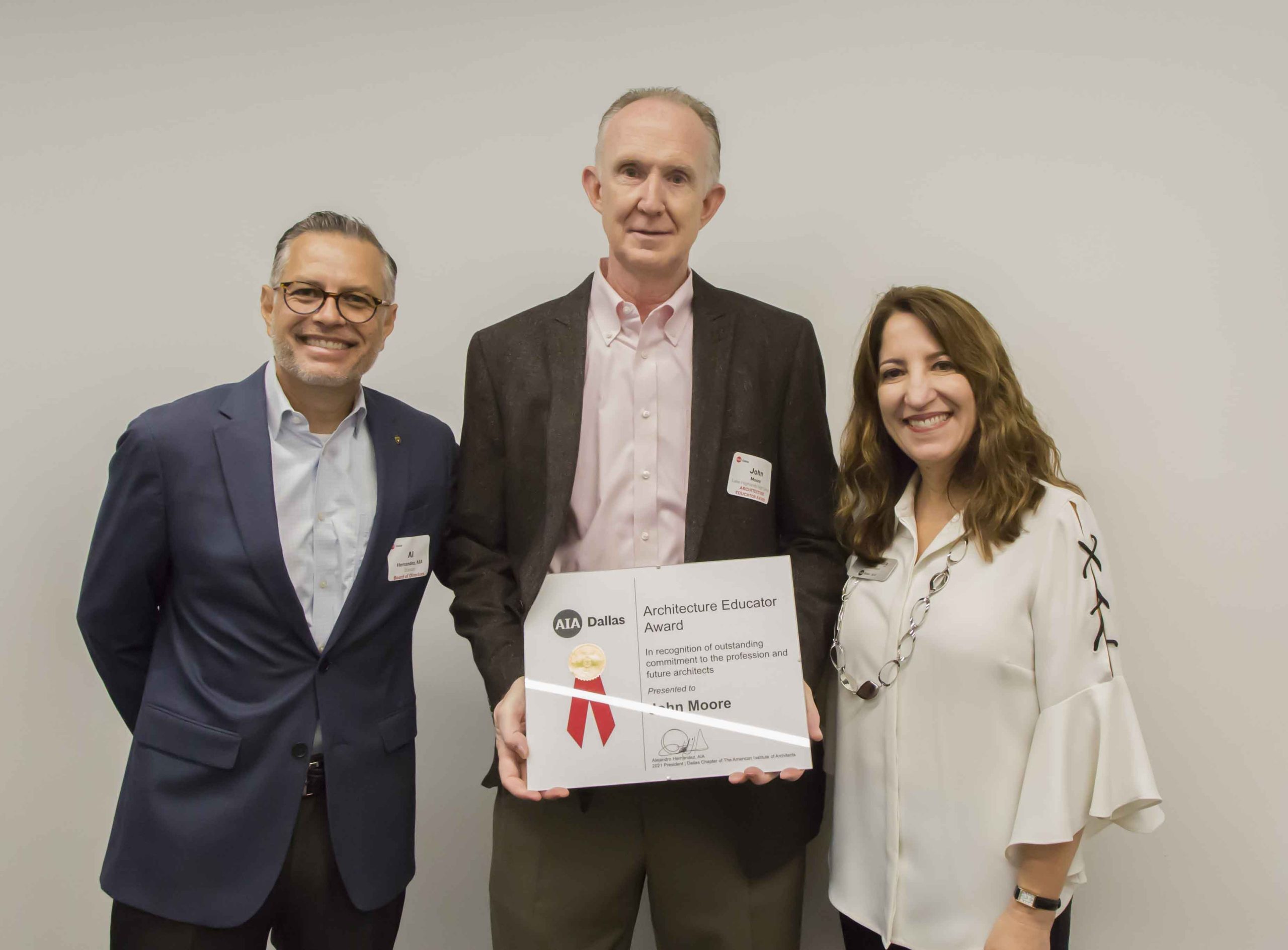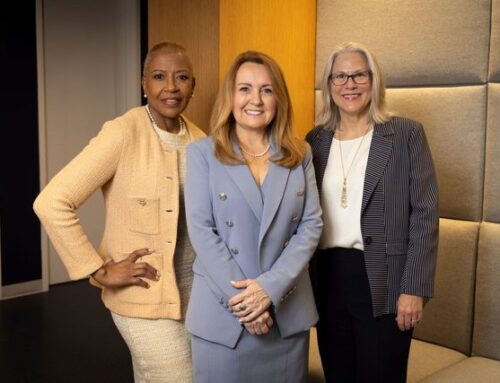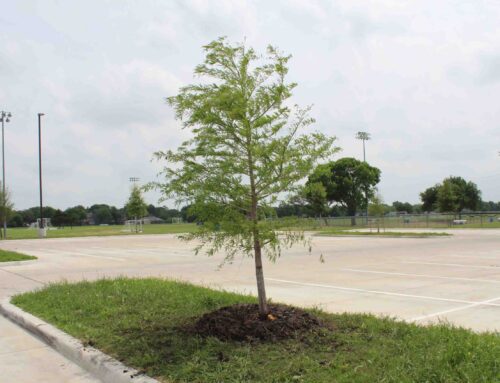- Computer animated creations from John Moore’s students
Lake Highlands High School’s John Moore was presented the Dallas Architecture Educator Award by the prestigious American Institute of Architects (AIA) in November. The award is given to teachers at local K-12 schools, community colleges and universities for their commitment to the profession and future architects by instilling and fostering the desire to learn.
“For over four decades, John Moore has dedicated his life to giving high school students instruction in the cutting edge of architecture and drafting,” praised AIA reps. “Since 1979, he has led the Lake Highlands High School Architecture Program, introducing future designers to concepts that have provided a foundation for their careers within design firms across the U.S.”
During his many years at LHHS, Moore has avoided drawing attention to himself and his accomplishments. Talking about his students, though, lights him up like a Christmas tree. Of the many students and student projects he’s proud of, one has made a lasting impact on the community.
The Richardson ISD’s 2016 bond program originally called for 24 new classrooms and a MAC (multipurpose athletic center) at LHHS, but Moore encouraged his students to envision a connector building unifying the high school with the freshman center. Students were getting soaked in the rain and running late to class as they traversed the distance between the two unconnected campuses, and Moore encouraged his kids to design a module which tied them together.
Colt Brock, now a senior at Georgia Tech, and Jacob Clayton, now a senior at the University of Texas, created an early mockup of what was eventually built at LHHS while they were Moore’s students. Their idea to move common areas such as the student center, cafeteria and library to the center freed up square footage for the 24 classrooms originally requested. Moore coined the term “The Hub,” and that’s what it’s called to this day.
Moore chuckles when he recalls the students presenting their idea at community listening sessions for the bond.
“Colt likes to talk,” says Moore, “and once the architects and planners gave him the microphone, they had a tough time getting it back.”
Moore says creating a unified Hub had another important benefit to the daily life of students at LHHS.
“In the old days, we had a student center, where white students ate lunch, and a cafeteria, where students of color ate. Now everyone gathers in the same place. It’s much better.”
The Hub is also used for a variety of other purposes, including special events, campus speakers, professional development for staff and other events. There’s a large display screen and lots of seating.
“My students benefited from the process because they got to interface with architects and hear community input. They got to see how the process evolved,” says Moore. “It was real world, not textbook.”
Moore praises RISD for providing the computers, 3-D printers, laser cutters and other high-tech equipment students need in his classroom. The Wild for Cats Academic Booster Club has also purchased much-used items for the program.
“We started out on a drafting board in 1979,” laughs Moore. “It’s changed a little bit.”
Moore is proud of his many students who’ve gone on to educations and careers in architecture and design – people like Robbie Stewart, who is preparing to earn a Ph.D. at the world-renowned Massachusetts Institute of Technology. He thinks his program also benefits students who have other careers in mind.
“Even if they don’t ever become architects, we teach them to think through a process and have a vision – to go through a process from concept to finished product. That carries over to lots of things in life. Engineering is problem solving. They have to figure it out.”
Moore is the father of LHHS grads Lainey Moore Gibson (2007) and Katie Moore (2010). His late wife, Betty, was a longtime P.E. teacher at Highlander School.

